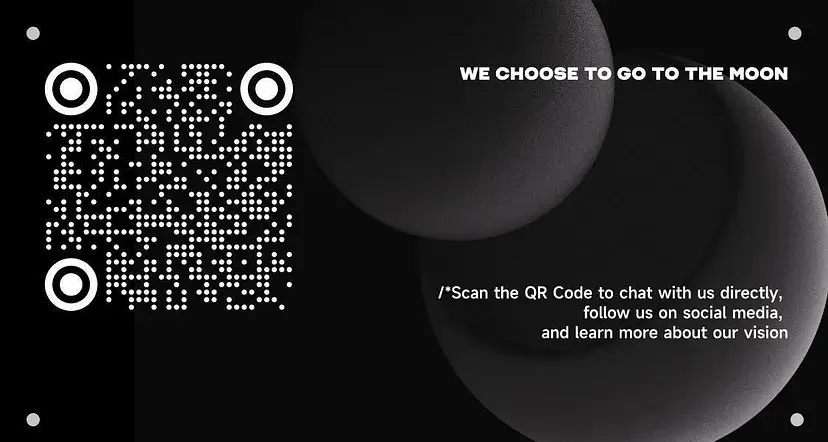Back
Moonshot Mafia #20 | Michael Saunders: The Intersection of Web3 and Incentives
Fireside Chats
By Moonshot Commons
Aug 23,202321 min read
Captain, an innovation lab led by industry experts, is at the forefront of pioneering Web3 commerce, specifically crafting marketplaces, apps, and Web3 products.
As the creator of multiple consumer brands, including the eagerly anticipated XP marketplace for secondary ticket sales, Captain is on the verge of revolutionizing how people engage with commerce. Powered by their award-winning protocol, Tamperproof secured 1st prize in the payments category at Solana’s esteemed Hackathon event. Captain has cemented its reputation as a trailblazer in the emerging Web3 landscape for peer-to-peer commerce.
At Moonshot Commons’ Web3 Fireside Chat #20, we invited Michael Saunders, the founder of Captain and the mastermind behind Tamperproof, Supper Club, and many other future projects, to share his insights on the intersection of Web 3 and incentives.

Key Takeaways:
1.Web3 empowers users and allows for frictionless transfer of value. Incentives and gamification mechanisms play a crucial role in engaging users and creating vibrant experiences in the Web3 ecosystem.
2.Successful businesses, whether in Web3 or any other realm, must solve real pain points for their target audience. This intersection of real problems and the potential of blockchain technology was the driving force behind Michael Saunders’ entry into the Web3 space.
3.Building Web3 products requires continuous experimentation and user education. For mass adoption, users need to become familiar with on-chain assets and the benefits of using blockchain technology for real-world assets like coupons, gift cards, and tickets.
4.The future of marketplaces in Web3 will see a shift towards more peer-to-peer commerce, empowering users to control their data, money, and identity while coordinating with others without intermediaries.
5.Building in a bearish market can lead to more battle-tested and resilient projects. It is an excellent opportunity to solve real problems and create a stronger business that can disrupt traditional industries.
6.Entrepreneurship requires the willingness to take risks and accept failure. Embrace the learning process and be open to feedback and iteration to succeed in the ever-evolving Web3 landscape.

Harry Zhang:
Mike, could you please give everyone a quick introduction to your background? What made you decide to tap into Web3 and start Capitain?
Michael Saunders:
I started an internet business back in the 90s called campusfood.com. I was a student in college. I couldn’t get a tuna sub from my local restaurant and thought there was a better way. I’m an engineer, so I built campus food.com as a precursor to GrubHub. The only people with high-speed internet in the early days were in college. We were one of the first ones to do that. We took it to about 300 universities around the U.S. over a decade, sold it to GrubHub in 2011, and became part of GrubHub’s executive team.
My whole career was growing marketplaces and being part of marketplaces at GrubHub. I was there for four years. We acquired Seamless, took it public, and launched a competitor. At the time, we saw DoorDash and Postmates coming up. I left the space at the end of 2015. At that point, I became an adjunct professor for entrepreneurship at Northwestern University, where I started really reviving my interest in tech and found blockchain. Those were the intersections between my life of marketplaces and watching blockchain occur with the same excitement that I remembered about the Internet; it felt like the right intersection to solve a problem.
Harry Zhang:
What general principles do you follow when starting a new project within Web3 or any other business realm?
Michael Saunders:
First and foremost, you have to solve a real problem. You have to solve a real pain point for someone.
At the time, I was interested in blockchain, but my restaurant friends I worked with for years called me up and said, “Hey, your old friends at GrubHub are charging 20%, 30%. Can you help?” There’s this real pain point for people who thought they were getting value and the value extraction was so high. There had to be a better way.
I had this “why us- why now” moment where blockchain was coming of age and marketplaces that felt ready to be disrupted. Those were the two vectors I looked at while jumping in.
Harry Zhang:
Do you recall the aha moment that you decided to commit to Web3 full-time? Is there a story behind that?
Michael Saunders:
In 2018, I had my GPUs running and was playing around with Ethereum. I found CryptoKitties, one of the early NFT projects. I just watched and understood how it worked, which felt like the Internet from the late 90s. There was this feeling that you could do anything with the Internet. I could move things around when information was available anywhere, such as transferring value anywhere with blockchain. As the restaurants were quite frankly screwed, this felt like an opportunity. Starting campusfood.com in 1997, I was about five or six years too early for when it became more mainstream; it was niche. We were educating people on how to use the Internet as much as we were getting them to order food online.
When the idea came to Captain, it was the same feeling, but with much more experience. We were very early in this space. We all love crypto, blockchain, and Web3, but it would take a while before it became something my parents would use. Part of the challenge was how we play in the pool now, giving ourselves time to let the world mature. Captain was founded as more of a tech lab to pioneer on-chain commerce, knowing we were three years earlier than we should be in starting it up.
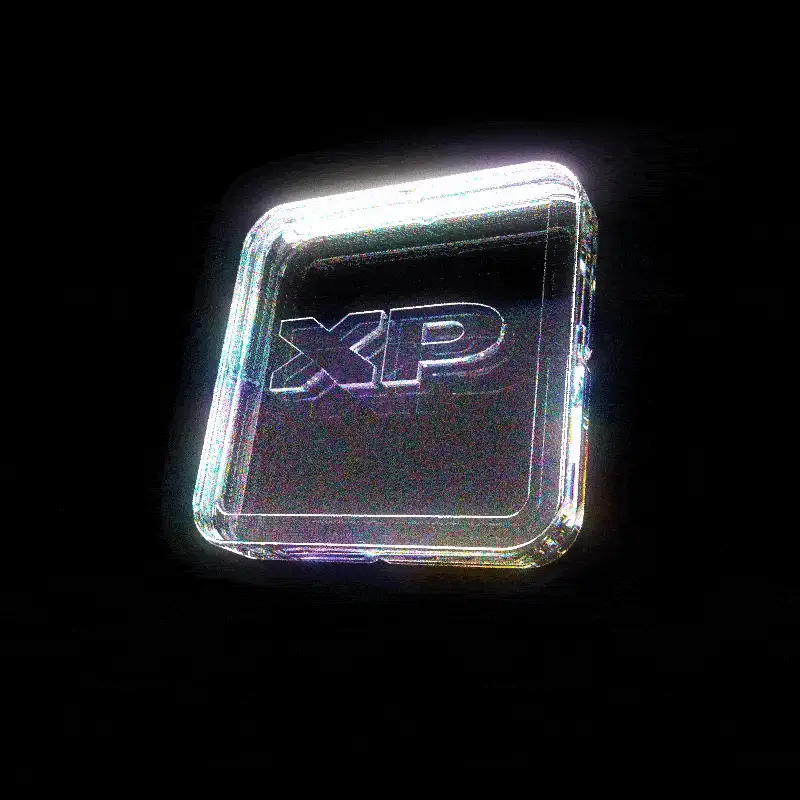

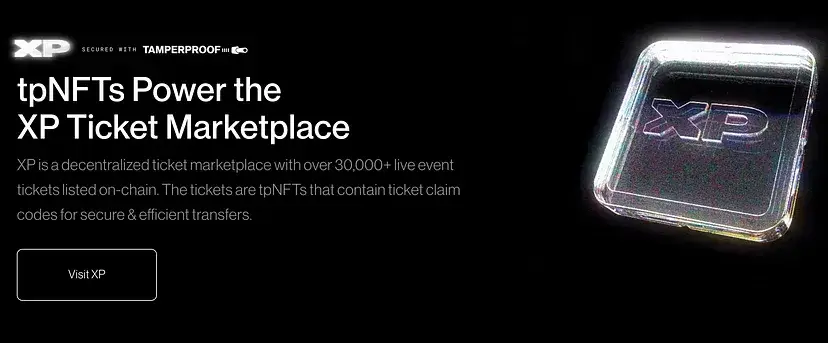
Harry Zhang:
That idea of experimenting makes a lot of sense. It’s like a venture studio for Web3. What would be your visions for it in the future as you continuously experiment with other projects in the marketplace space?
Michael Saunders:
Our focus is really on marketplaces. The Internet marketplaces solved trust and discovery problems in the early days, but they all got very extractive. They extracted too much at the expense of the customer. What’s so great about Web3 is it empowers the user. We own our data, dollars, and tokens. New ways of doing business can form with a frictionless transfer of value.
That promise is compelling to many people. With Web2 and social media, there are lots of walled gardens appeared. We all became beholden to various middlemen, including Facebook, with our data. The idea that I could have a wallet and do whatever I wanted without anyone in between seemed powerful.
Harry Zhang:
Speaking of something powerful, I’ve seen your products like Tamperproof, TicketDex, and Supper Club at work, but many of our community members haven’t. Can you briefly explain how they each work, like you’re explaining it to your 12-year-old nephew?
Michael Saunders:
Sure, I’ll start with Tamperproof because that was our big unlock. Tamperproof is an NFT protocol. If you take a gift card and turn it to the back, there’s a secret pin you have to scratch off to use it. We built the ability to take that secret and seal it inside an NFT. It allows you to have this on-chain gift card to send and sell. Everyone along the way trusts the person that sealed it attests to what’s inside is real.
That alone is powerful in that it allows us to take a gift card, put it on the chain, and make it transferable. This technology is something we built on the Solana blockchain. They had a hackathon a couple of months ago called Grizzlython. We came in first in their payments track. That was the big unlock for us because most of Web3 and what we’re all building here is this self-referential world where everything is on-chain, so you can’t exit the real world without much friction.
We’re trading NFTs, buying coins, and doing defi, but everything is natively on-chain. The first thing that’s not on the chain or a bridge is something like USDC, something with a bank account somewhere with a dollar, tether, or something similar.
Tamperproof allowed us to use the simple key code and start to bridge all the other marketing systems to bring their on-chain value, like coupons, gift cards, claim codes, and all things you could export from Shopify or your POS system, without using the word NFT.

Harry Zhang:
Could you expand more on how you came up with each one of these ideas, especially from a product design perspective?
Michael Saunders:
Tamperproof was this unlocking-it moment. We built a community-focused restaurant rewards app called Supper Club late last year. It’s in the app store, both iOS and Android. It was an online gaming platform that allowed users to spend time with the community, play games, and earn points for prizes.
If we had enough people hanging out and playing games together, we could get local businesses to sponsor prizes to keep their attention. It worked really well. We actually started building it out. In college markets, a lot of innovation emerged, and people were receptive to new things.
All these local businesses offered prizes in the form of gift cards and coupons. We thought that was great. We got people playing with this Web3-embedded wallet. They were on Discord playing games and earning coupons to Einstein Bagels, Panera, and all these other local businesses.
But at the end of the day, we would have to email them when they got the coupons. We broke the fourth wall there and had to ask for their emails and send them across. Once they got them, they couldn’t trade the rewards with their friends. So, we had our own bottleneck with Supper Club — you could earn many points, but the points only meant something if you could do things with them.
That’s what the Tamperproof tech unlocked. This was the story behind how the Supper Club rewards app turned into us building this Tamperproof protocol. And from that exposure, we gained a lot of interest from the community and the ecosystem, with other people realizing they had rewards and incentives they wanted to offer. They would rather offer a Chick-fil-A gift card than a USDC token or do more creative things with rewards and incentives that we can now unlock with Tamperproof.
Harry Zhang:
A key aspect of the product design with either Supper Club or Tamperproof is incentives or a gamification mechanism. Why did you choose this particular approach? How does this approach benefit Captain and the broad Web3 ecosystem?
Michael Saunders:
In Web3, we’re all trying to figure out the business models and how this evolves. Web3 is good at financializing everything. Everything can get boiled down to a transaction and arbitrage, and we see that all the time. But there’s so much more than that. NFT projects and communities around it show that people want more than just trading.
You always want your floor to go up, but you also want your identity tied up in your online time. Around identity and attention, gamification is such an essential part of that. It’s a tangible way that you can engage with people. Games are a natural normalizer if they want to avoid meaningful conversations in Discord. It’s a great icebreaker to get people coordinated. It’s like a coordination protocol that we all inherently use to accomplish things as a larger community.


Harry Zhang:
In your opinion, what are some characteristics of a good product? What is your design logic behind Tamperproof and Supper Club?
Michael Saunders:
This is a bit of an art and a science. It comes down to first principles. It is essential to understand the problems that we’re solving and the audience that we’re solving for.
As much as we want to solve problems using blockchain, it’s still very early. The amount of people with active wallets is tiny. Getting people to onboard with wallets is hard, so we have to meet the people where they are.
If you solve a big enough problem, you can grow the audience over time, but you need to focus on that core cohort of users, the ride-or-die folks who are building with you. We are going to be in the early adopter phase of on-chain.
We must embrace that, be honest about solving the correct problems, and speak the right language.
Harry Zhang:
Because of how you design all these products and ensure the mechanism you have in place works, Tamperproof recently won first place in the payment track of Solana’s Grizzlython. Huge congratulations. On top of that, the Blink-182 concert was sold-out in Chicago, which also demonstrates the potential value of the Tamperproof technology in real life. From your perspective, what are some other use cases for this new protocol?
Michael Saunders:
Immediately after the demo day with Tamperproof, we started looking at what else to jam inside an NFT and seal up. Gift cards and coupons were the first use case. But the more we started talking to people, the more we realized the broader opportunities. Tickets were an obvious next step. Concert tickets and live events were screaming for things to be brought on-chain. We learned a lot about tickets in the last month, and everyone has an experience where they feel like they are gouged in the secondary market, like StubHub, Seat Geek, and Vivid Seats.
“I just want to buy a ticket from somebody I found on Reddit. Why am I paying a 30% premium?” The blockchain is made for this, but people are not using it.
As a proof of concept, we acquired some of these Blink-182 tickets and put them in escrow and Tamperproof. We were able to sell a bunch of them on Magic Eden. It was a great experience. We are doubling down in the space. We think there is a huge opportunity to democratize secondary ticket sales much faster.
Harry Zhang:
Incredible! I can even see it as a great case study. You are a mentor at the Garage and have many entrepreneurial teaching experiences at Northwestern. If you consider the over 200 people here as students, how would you break down that particular case step-by-step? How can other founders replicate that process to experiment, validate the thesis, and get closer to product-market fit?
Michael Saunders:
The Garage is an entrepreneurship program at Northwestern, where I mentor. There are two types of student ideas that come in. One is with an actual business model, and the other is with someone wanting to build an app.
It comes down to what you make that is better, faster, or cheaper for someone else. How do you, as fast as possible, know if you are on the right track? I am a curious person, and I love to tinker. Those are characteristics that make for a great entrepreneur. Optimism is key. You need to be able to scratch at a problem and figure out “Why you?” and “Why now?”. You need to validate it with people who don’t have to tell you it’s a good idea. To customers, you want to be more of a need than a want. It is undoubtedly tricky, so you have to be willing to get punched in the face repeatedly. Then, come at the problem differently to know whether you are on the right track.

Source: Tamperproof.

Harry Zhang:
To follow up on what you were saying about continuously trying, validating, and looking for the super users, do you see any parallels between your previous Web2 entrepreneurial experiences and this one in Web3?
Michael Saunders:
There is so much human nature in everything. That is really why history rhymes. The first time around, I was doing a lot more programming. And this time, my experience matters more. I have a fantastic team of people I’ve worked with at GrubHub and other places. We are all seeing the same thing. We are witnessing how history rhymes. You get to go back to first grade and take some classes over again.
It is also different. Things move so much faster now. We are a team of about a dozen people. I would have needed 50 people a decade ago to pull this off. You can move faster, but you still have to keep up with the tools that make everything more of a superpower.
Harry Zhang:
What are some critical steps to make Tamperproof reach mass adoption or a level that the mass can accept? What are some steps you have taken so far? How do you plan to make your other visions a reality?
Michael Saunders:
There is an existential bet we have made, which is that Web3 will become real. It will become more mainstream, and people will be saying on-chain like they say online.
With Tamperproof and our products, we are trying to stay pioneering at the forefront of online and on-chain commerce. We are trying to catch the wave when it hits.
With many startups, the challenge is you have to be there early. When you see things happen in the news, it is too late. Often, being too early is like being wrong. Regarding stats and metrics, we have been building Captain and bootstrapping it to not burn a lot of cash so that we can evolve as the industry evolves around us.
If I told you that today would look like what it looked like two years ago. You can have some ideas and a North Star, but you must know how the market works and moves around. You have to be ready to know what problem you’re solving and roll with it. For me, it is all about wallet adoption. Ultimately, the term we often use is Web 2.5, which is how you embed wallets into apps so people don’t know it’s a wallet. This opens up the audience. There are two things to keep an eye on. First is to focus on our Web3-native early adopters to prove what we are doing works. The second is to ensure enough users because this only works if more people enter the pool.
It is not easy, but you must be willing to pivot on a dime, take in all the signals you get in real-time, and react.
Harry Zhang:
Many users may need to become more familiar with moving real-life tokens as assets on-chain. What does that mean? What is the typical process? What are the values of having coupons, gift cards, and tickets on-chain?
Michael Saunders:
We would watch people use our apps for the first time. After that, they will get how it works. You did not understand what mobile or mobile apps were until your first time calling an Uber using it. Then, you would think this is cool.
A lot of what we do is Web3 education. It becomes real once somebody has a food or drink ticket on their phone that they can cash in for a sandwich, or you and I play a game together to swap something. There is something about logging into Amazon and seeing my order history; it feels like something other than mine. It feels like it is Amazon’s representation of me. But in these early experiences with wallets, you realize that whatever is here is yours.
It is a powerful feeling. Again, there is a lot of experimentation and movement around this. It is why the more prominent companies will have a more challenging time with early innovation because they are not in a position to move fast and react.
From the experience of GrubHub, you hit a certain inflection point on size and give up the innovation. The only thing that you do is buy companies that innovate. After a specific size, these big companies become financial banks.
These small companies are where the innovation happens, but what’s interesting about these models is that they differ from companies like ours. We’re empowering the users to organize on their behalf, so it’ll be an exciting experience to see how corporations versus unions emerge from these business models around Web3.
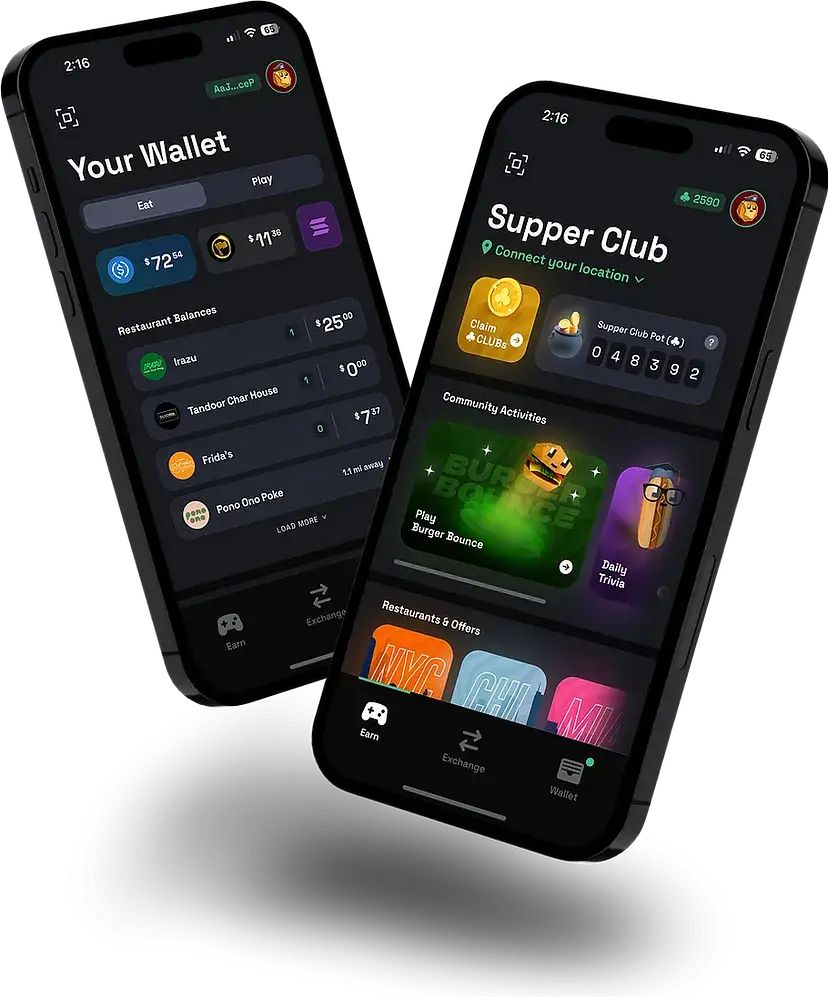
Harry Zhang:
The education piece is so important. Another integral aspect of having a great experience lies in developers' crucial role in building products to push the Web3 world forward. How can other developers build products leveraging Tamperproof’s new protocol in the future?
Michael Saunders:
We just launched an SDK so you can unseal Tamperproof NFT natively inside your app or wallet. We have that out now on Tamperproof.xyz, and you could apply for access. We are now engaging the community to be a standalone oracle where others can seal their secrets. As with everything in Web3, things move very fast. We would love to hear from people building with unique use cases and trying to figure out ways to partner.
We had one inbound request for someone who wanted to use Tamperproof as read receipts in email. You could send a message and know when the other person opened it. Someone else wanted to put invoices in there, so there were all types of use cases.
We also get a lot of requests around gaming, and we’re trying to synthesize all the demands and figure out how to serve the community better.
Harry Zhang:
You spoke of partnerships, and because of the Solana Hackathon, you had a lot of opportunities to form these partnerships and push the ecosystem forward. From your point of view, what types of ecosystems and partnerships are essential for Captain to make on-chain technology more compatible and relevant to everyday consumers?
Michael Saunders:
Looking at the Web3 community, we’re all a bunch of builders and optimistic about the future. This is initially around incentives and rewards. We’re all trying to figure out how all the projects can engage their audience better. Can we help projects engage their audience?
Loyalty is a big word in the space. We don’t see ourselves as a loyalty company, but we enable loyalty by encouraging rewards and incentives. We can help create vibrant experiences where people can take action and get something in the real world. We hope to find the most fruitful partnerships in those places.
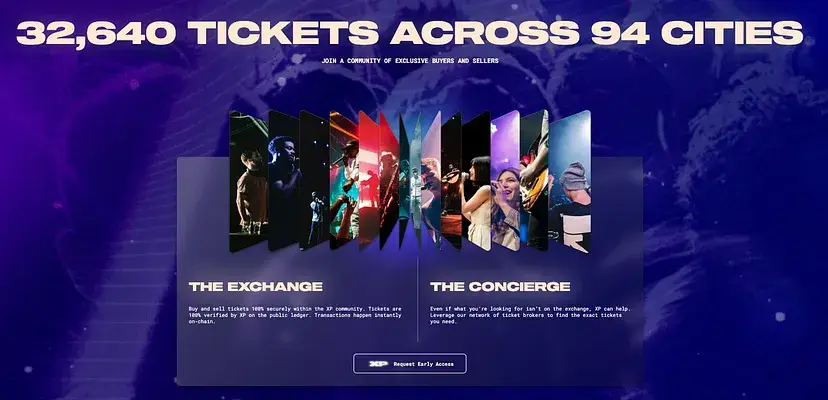

Harry Zhang:
You have a ton of experience building marketplaces. What will the Web3 marketplaces’ future landscape look like in the short term, three years, five years, and all the way up to ten or twenty years?
Michael Saunders:
Under the banner of Captain, we’re looking to disrupt live events, food delivery, offers, and rewards that fit into this new model. The future marketplace is a fairer balance between supply and demand. It’s really about how as a user, you can get more for your money by controlling your data, money, and identity and coordinating with other customers without needing to know them so closely. Blockchain gives you anonymous trust. I don’t have the exact answers to how it all plays out, but it’s silly that the whole economy wastes 3% on credit card fees for moving a dollar around that could be moved around for nothing.
Then, because we’re all globally ordering food online and paying ridiculous service fees, your margin is my opportunity. People should not be paying that fee, especially in a world of inflation and rising prices. It is a simple place to save money.
The problems right now are education and friction. It has to feel as easy as hailing an Uber. And that’s where you get your three, five, and ten-year plan.
Harry Zhang:
There’s one quote I remember you said before, “Peer-to-peer commerce is here.” Could you expand on this? Why do you say peer-to-peer business is here? What exactly have you seen changed from GrubHub and Uber alike dominating this area to now Supper Club, Captain, and other projects to overtake that segments of the industry?
Michael Saunders:
I think Uber’s original idea was a lot around peer-to-peer. It’s like I can get a ride from my neighbor. But today, Uber and Lyft feel like something other than peer-to-peer. It feels like you’re using an app. It feels like the app is in control, and individuals don’t have the power. Taking concert tickets as an example, I want to sell my ticket before a game I can’t attend. I go on to Reddit, the Facebook marketplace, and all these sites to find somebody to sell to. The situation is “I’ve got an asset, and you’ve got the cash. Let’s make the trade.” That’s surprisingly difficult today.
There are sequencing, trust, and many concerns around this in Defi pools and on-chain lending. But it needs to be more significant until you can bridge real-world assets. Peer-to-peer is technically here, but we need to expand the universe of assets that could be traded peer-to-peer.
Harry Zhang:
How do we get closer to that? What is the fundamental hurdle with real peer-to-peer commerce, and when everybody’s here for the Web3 mass adoption?
Michael Saunders:
Find your friends and download a wallet with them. They need to have a reason, and there’s it.
Again, this is where history rhymes. Bill Gates was on the David Letterman show explaining the Internet, and people were laughing about how they could just listen to a baseball game on the radio instead of on the Internet.
We’re at the same point in time, which is why this is different. Why is sending money across the world for a fraction of a penny different from doing it without a middleman? People need real-world examples to solve a real problem to realize the actual concept.
It takes a collective. All of us are in the space building. We are all excited about the future, and we are all optimistic about what it could be. It’s the collection of us, and we all have to keep building, trying, finding the problems that make the most sense, and then building on top of each other.

Harry Zhang:
From your point of view, how has the industry shifted from 2018, when you started Captain, to today? What are some of the stories you could share about what you witnessed during this period of time?
Michael Saunders:
When we started it, these Internet marketplaces were broken. In the first few months, I was going to build something on Ethereum, and we just spent three months optimizing for gas fees. You just hit these walls early on. We ended up focusing on Web 2 infrastructure. One of the important things we did was powering a lot of restaurants and their online ordering technology to pay the bills and give us a foothold with customers and merchants.
You can’t be a purist with respect to how it has to be all Web3. It is about solving problems somehow. You need to know what and when to build, what to buy, and what your superpower is. There are so many things you could just hire Shopify for, but the Web3 sides are what all of us in the spaces are excited about. We’re all experts compared to the rest of the world, and we also don’t fully understand everything yet. Many of them still hear the news, and the news doesn’t do it justice.
The stories were around for us, knowing we were correct that on-chain commerce would be real. But then, we also know it’s so hard as we watch the boom and bust cycles, the ICOs, the Bored Ape, Yacht Club, and Tokens worth hundreds of thousands of dollars. We are realizing that all we wanted to do was just cut out the middleman. Yet, what are we missing here? How do we solve this in the long term? We’ve been adjacent to the Web3 space from the beginning, trying to solve this problem. What’s exciting is that this feels like the first wave where the infrastructure layers are all built. When this bear market turns, it will be about applications and use cases.
Harry Zhang:
There are times when everybody expects the best from the industry, and now, in a more bearish market, people start having more and more doubts. What’s your best advice for other serious builders hoping to make something incredible that’s a killer app in the industry in this market landscape?
Michael Saunders:
This is the best time to build. It’s always exciting when the fast money is sloshing around. But in the end, you also get a lot of bad ideas that get funded.
The things that come out of this market are more battle tested. If you could solve it here, you’re probably a stronger business for doing so. This is a technology that is going to disrupt billions and billions of dollars of business. Everyone on this call can make a difference. We are the ones that are using the technology for the first time, and that edge allows us to attack problems that otherwise couldn’t be unwedged. It’s a decisive point in time where this blockchain technology can break apart billion-dollar companies.
Harry Zhang:
What’s one piece of advice you have for founders, aspiring founders, or anybody generously interested in Web3 or crypto?
Michael Saunders:
For young entrepreneurs, don’t be afraid to fail. Your current idea is not going to be right. You don’t know why it’s wrong. Yet, to be a successful entrepreneur, you must be able to put yourself out there and put the idea out there. Then in real-time, react to it.
In college, you’re going for your As or your 4.0 GPA. Here, 80% is already perfect. That mentality will take you far, especially when you are attacking new problems.
Harry Zhang:
Do you have any last comments you would like to share with this group related to Captain, Web3 marketplaces, the intersection of Web3 and incentives, and the broad Web3 space?
Michael Saunders:
We are very early in a real technology revolution with Web3. Everyone here with little time can know more than 99% of the world because we’re so early. So time is your friend in getting involved. We’re committed to focusing on-chain commerce and innovating around marketplaces; incentives and rewards are a big part of that.

